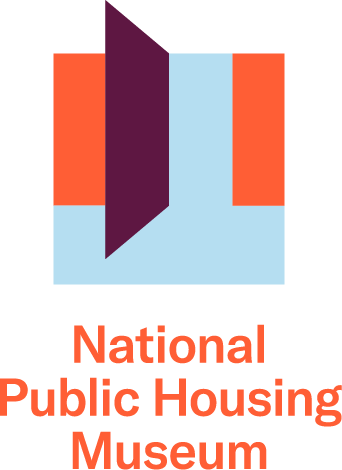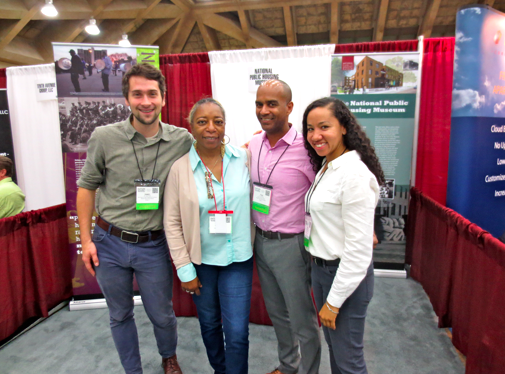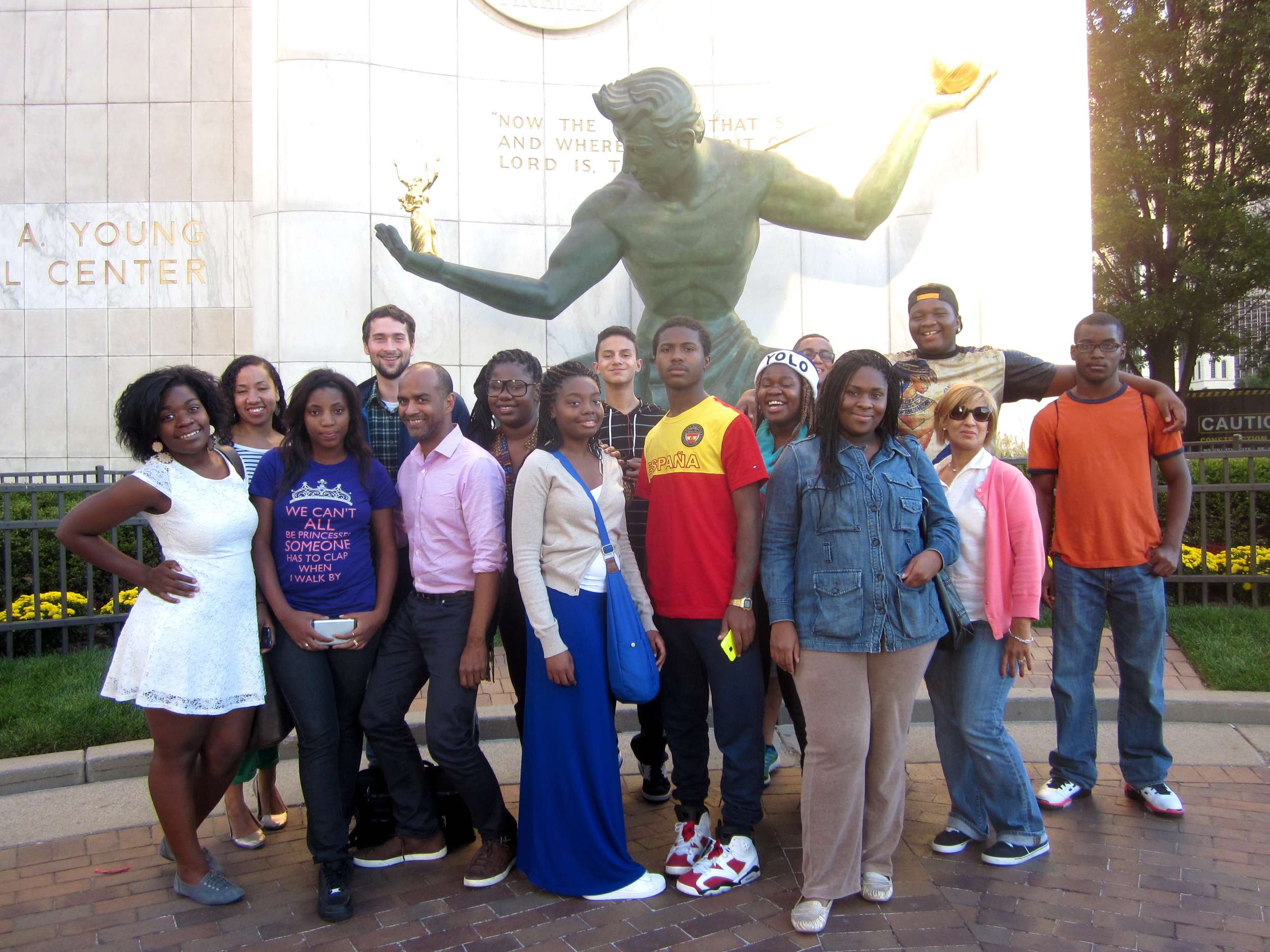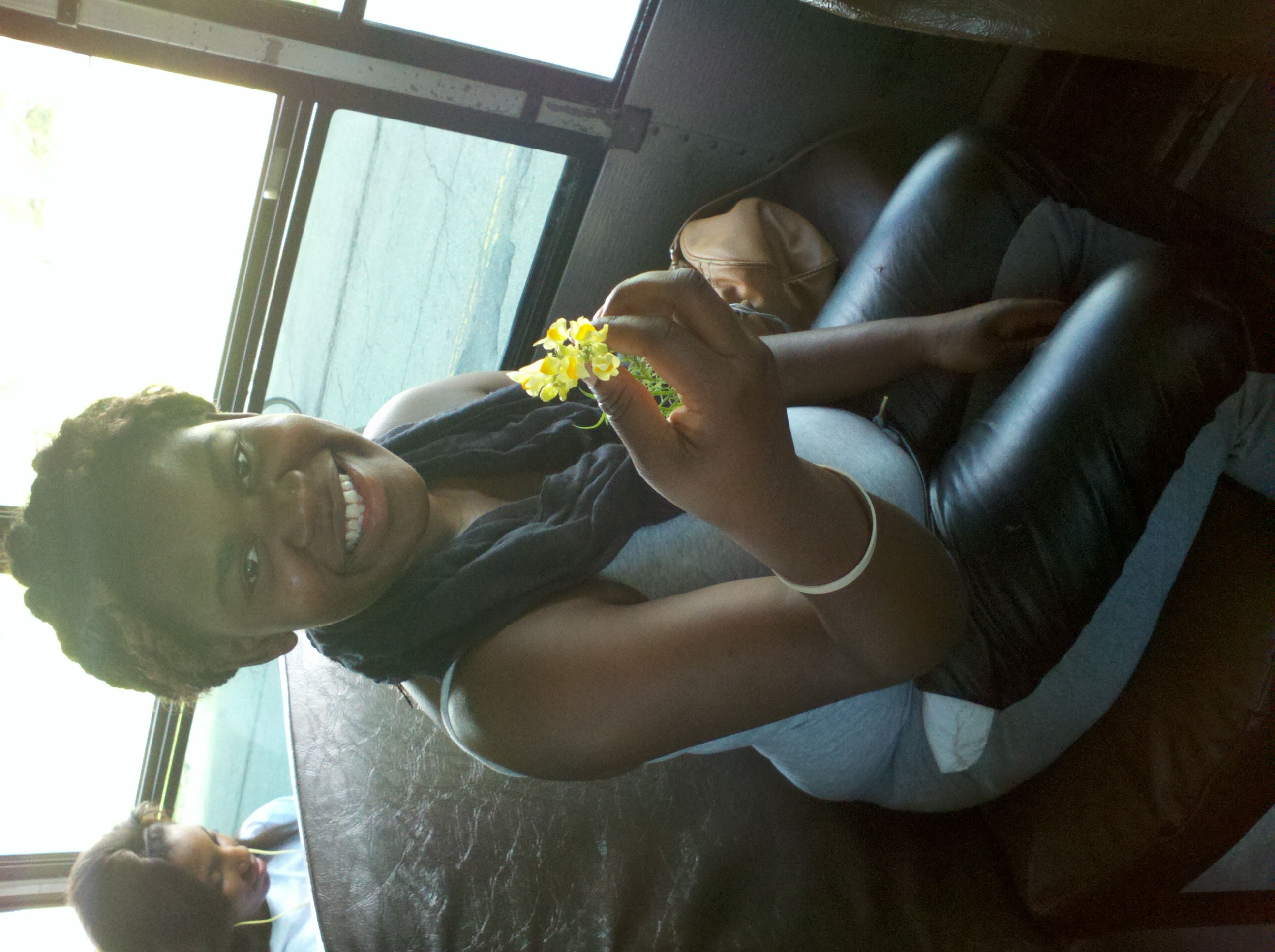The past year has seen exciting growth in our public engagement efforts. Whether it's through our own programming or partnership events, we are always looking to actively engage audiences in our mission. This is the first of three installments of our "Year In Review."
JANUARY
17 January – Bronzeville Visitor Information Center presents Audrey Petty in conversation with Monroe Anderson and a panel of Chicago residents, scholars, politicians and cultural leaders discussing High Rise Stories including NPHM Interim Director Todd Palmer
23 January – NPHM co-presents Larry Vale (MIT) speaking about Purging the Poorest with “One Book, One Chicago” at the Chicago Public Library
30 January – NPHM in partnership with Newberry Library “Meet the Authors” event Public Housing, Urban Politics, and Reform in Postwar Chicago & Milwaukee with Brad Hunt (Roosevelt University), Eric Fure-Slocum (St. Olaf College) and Leon Fink (UIC)
31 January – Social media coordinator and University of Birmingham UK exchange intern and Rachael Foster presents the NPHM story at the UIC Urban Innovation Symposium Pecha Kucha
MARCH
18 March – “Total Reset” Roundtable at the Institute for Public Architecture New York City, moderated by David Burney in conversation with national public housing experts and advocates including NPHM Board Chair Sunny Fischer
22 March – NPHM’s 1322 Taylor Street building tour for Lake Forest College “American Cities” class
APRIL
30 April – We Are A Part of Them: A Community Open House brings 30-plus individuals into a communal discussion with the staff and Board. The gathering reveals NPHM’s multifaceted stakeholders include artists from Cabrini-Green, local advisory leaders from Washington Park and ABLA, former CHA employees, high-school aged mixed-income housing residents from Park Boulevard, funders from Chicago Community Trust and Alphawood, scattered site parents from the North Side, housing advocacy journalists, architects, U Chicago PhD candidates and professionals with family heritage and lore in NYCHA.
MAY
5 May – Chicago Community Trust in partnership with IIT’s Institute of Design “Social Sector Service Systems Workshop” exhibition. Features the work of public housing resident and photographer/teacher Annie Stuebenfield’s alongside other community-created and -informed projects created by IIT with NPHM and the Segundo Ruiz Belvez Cultural Center in Humboldt Park.
29 May – “Creating the Inclusive City: We Are A Part of Them 2” brings five practitioners from diverse areas of arts, culture and the humanities into conversation with the audience to imagine what a less-divided urban community might look like. With film producer and Cabrini-Green activist Teddy Bernard and Groundswell Films’ Sam Spitz; U Chicago race and literature professor Adrienne Brown; Chicago Home Theater Festival’s Irina Zadov; Aguilar of the Graffiti Institute, and Youth Struggling for Survival’s Sandra Sosa.
JUNE
25- 28 June – NPHM hosts “Preserving the Past and Envisioning the Future of Public Housing” as a special program of the American Institute of Architects’ Convention. After an introductory session for the AIA Housing Knowledge Community workshop, NPHM’s Todd Palmer is joined by “mobile symposium” guides Pete Landon (Principal, Landon Bone Baker Architects), Professor Bob Brueggman (UIC) and NPHM Youth Advisory Council alumna Salyndrea Jones to look at lesson learned at 1322 Taylor Street and across Chicago with 30 national architects.
AUGUST
6 August – Greening the Grounds, an event bringing NPHM neighbors to help clean up our future home at 1322 W Taylor Street. The University Village Association, ABLA, Taylor Street Farms, and many NPHM friends came out to enjoy an afternoon of flower bed planting and general grounds clean up.
8 August – NPHM on CAN-TV “Housing Matters with Recorder of Deeds Karen Yarborough”
SEPTEMBER
19 September – NPHM Interim Director and Curator Todd Palmer participates in IIT’s Institute of Design/Open Society Institute “Future of Work” roundtable
30 September – 1 October University of Chicago Graham School 66th Annual Know Your Chicago Tour, “Sweet Home Chicago: Problems and Promises of Public Housing”
NOVEMBER
20 November – Te-Nehesi Coates Conversation in partnership with the University of Chicago's Institute of Politics and the Center for the Study of Race, Politics, and Culture.
DECEMBER
10 December – Telling Belongings, a community storytelling event bringing the objects of our daily lives to help tell the story of public housing, curated by Interim Executive Director Todd Palmer.
Thanks for a great year!
Daniel Ronan, Coordinator of Site Projects & Public Engagement, NPHM


























